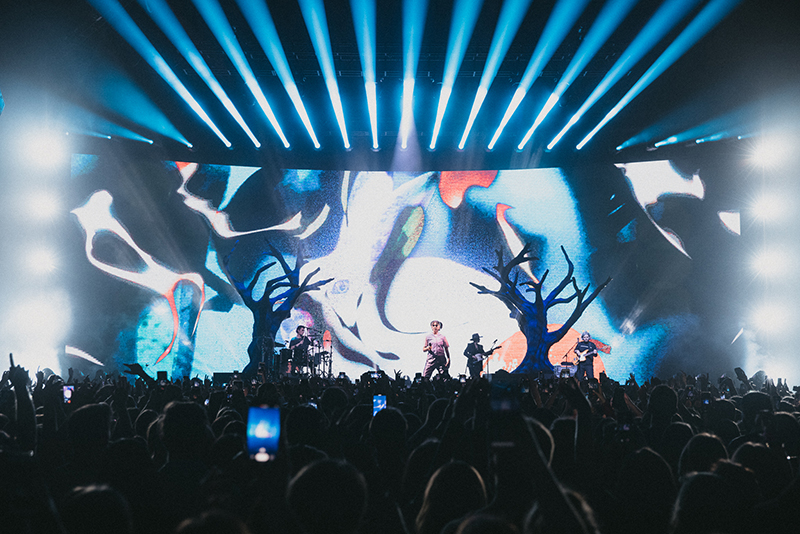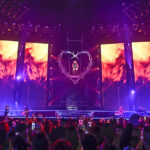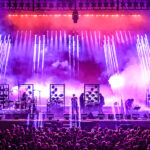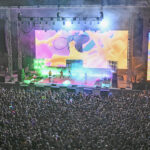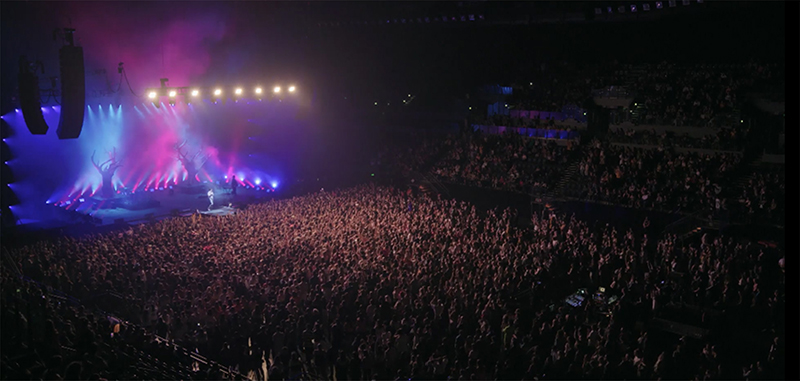
Show/Production Designer Ben Dalgleish Takes a Post-Covid Concert Tour Back to the Arenas
In October of 2020, indie-pop phenom Benee wrapped up the first major tour to happen in New Zealand since the Covid-19 pandemic broke out in March. Since New Zealand had really clamped down and created a country-wide bubble early in the pandemic, they were able by October to return to things like live in-person concerts with no restrictions for acts based in the country. The sold-out tour consisted of eight shows in four cities across New Zealand including Dunedin, Wellington, Christchurch, and ending in the singer’s hometown of Auckland. Benee’s final night at Auckland’s Spark Arena, became the first livestreamed sold-out concert to a global audience since the start of the pandemic.
The 20-year-old Benee [Stella Rose Bennett] is a singer/songwriter who in both 2019 and 2020, consecutively won Single of the Year, Best Solo Artist, and Best Pop Artist at the New Zealand Music Awards. With her current single, “Supalonely”, an international hit, including in the USA, her management team felt it was time to step up the production values for the live performances and they brought in Show/Production Designer Ben Dalgleish and his firm Human Person.
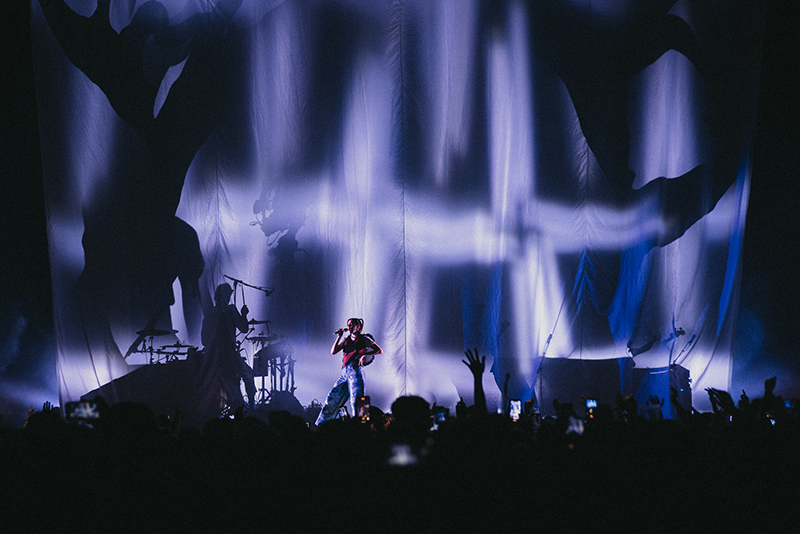
When the tour wrapped, PLSN was able to speak with Dalgleish about his design on the one of the few live music productions with a live audience. “It is crazy to say, it’s a real tour with a normal audience, with no social distancing. We all feel very lucky, and to be honest a little sad, to be working in this environment while so many of our peers are unable to.” he notes. “The opportunity to do this show was something that Human Person was very fortunate to have, and we were really cognizant of that fact.” To that point, Human Person made a real effort to bring in as many of their collaborators from around the world as possible for the Benee tour. “We had people in Toronto, Canada, helping with the lighting programming as well doing video editing and Notch. Our team created some of the content in Los Angeles, along with a company called The Valdez, out of New York, that created a large part of the video content.”
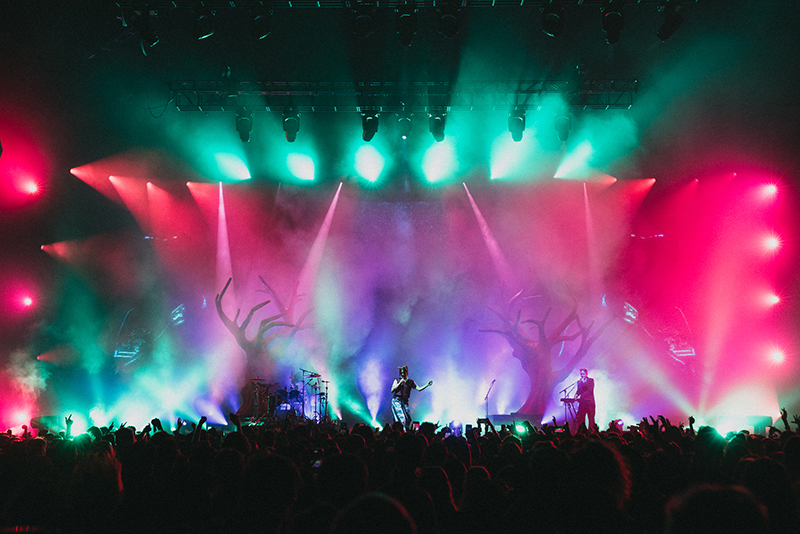
Dalgleish, known for his award winning work for Post Malone, knew that this tour would be a real statement as Benee moved to the next level from festival gigs to sold-out arenas. “She’d never really done a show of this size before,” he explains. “This was going to be her first arena tour so a lot of care and effort was put into how we wanted to present Benee for the first time to not only a large in-person crowd, but also a worldwide audience, as the last show of the tour would be live-streamed. We wanted to get across the unique feel and mood a Benee performance has, hopefully getting people excited for the future, when she plays around the world.”

The production was also aware that even though New Zealand is back up and running in terms of holding concerts many of the lighting and sound vendors are still in choppy economic waters. They had been closed down for a long period and international acts still can’t come into the country so concert touring, while open, is greatly reduced in the country. To help ease the burden a bit, Dalgleish and production manager Daniel Warwick chose to break the video and lighting package up and source much of it locally over the four cities they were playing. “There’s been a lot of great vendors in New Zealand who’ve had some tough times. So, we made the conscious decision to spread the love as much as we could. That, of course, led to a few challenges trying to, every day, have the best lighting show as possible with cloning and such. We did tour a floor package throughout the whole run, but the overhead lighting package and LED package was local to each region.”
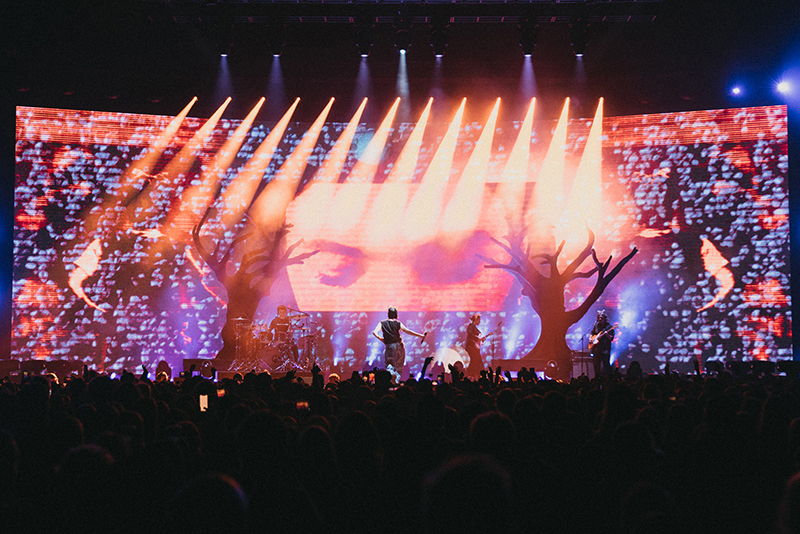
Two large trees occupy the space between the band and the rear video wall. Ben expands on them. “Some of Benee’s songs take place in a world where large, dead trees made sense. We wanted to more just create her own world/environment for her to perform in. A lot of the visual content centers around natural elements also. For example, for ‘Night Garden,’ we positioned leaves and other foliage on the LED walls to make it look as though it was attached to the real trees. The trees were built by a family friend. In true New Zealand fashion where everyone knows everyone, Stella herself has a close family friend who is a scenic builder. So I found some tree models and customized them and modified them to be our own. From there a scale was decided and they were built. The whole process was really smooth and they have become a staple to our visuals, often used in silhouette form.”
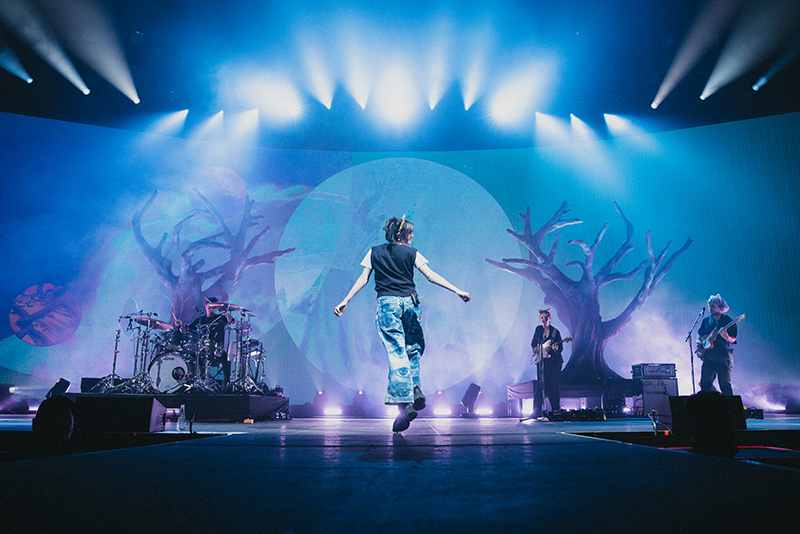
Spotlight on the Artist
Trying to make the lighting design feel inclusive and organic, to create a sense of being immersive Dalgleish designed a semi-circular layout that encompassed the stage. “We had a full stage of strobe and LED beam type fixtures,” he describes. “That was the main design choice on the floor. Outside of that, we just tried to get as many good premium fixtures as we could. The [Robe] MegaPointe was the featured fixture on the floor, which allowed us to do many intricate beam and gobo looks. As New Zealand is limited on fixture selection, the focus for better or worse needs to be less about the equipment and more how it’s programmed. As we had the live stream to contend with, as well as filming for late night TV shows including The Late Show with Stephen Colbert, we were programming up until doors on just about every show just to make it that much better.”
To capture the organic feel, Dalgleish knew that having traditional followspots would “definitely have killed the mood.” He opted for the use of a remote followspot control for a much more integrated look for Benee’s shows. “The other major choice of gear for the tour was the Follow-Me system,” he says. “That was a big push for us to get that across the line, and we were really happy that we did — knowing on one side, Benee is essentially a pop artist and her fans want to see her, and on the other side that we wanted to create this organic framing of the music. The Follow-Me system was key. Balancing those two worlds was one of the biggest priorities going into the design. I thought Follow-Me, was the best solution — being able to choose different lights to key light her at different moments. Having full control of the color, iris and even strobe became very important throughout the show.”
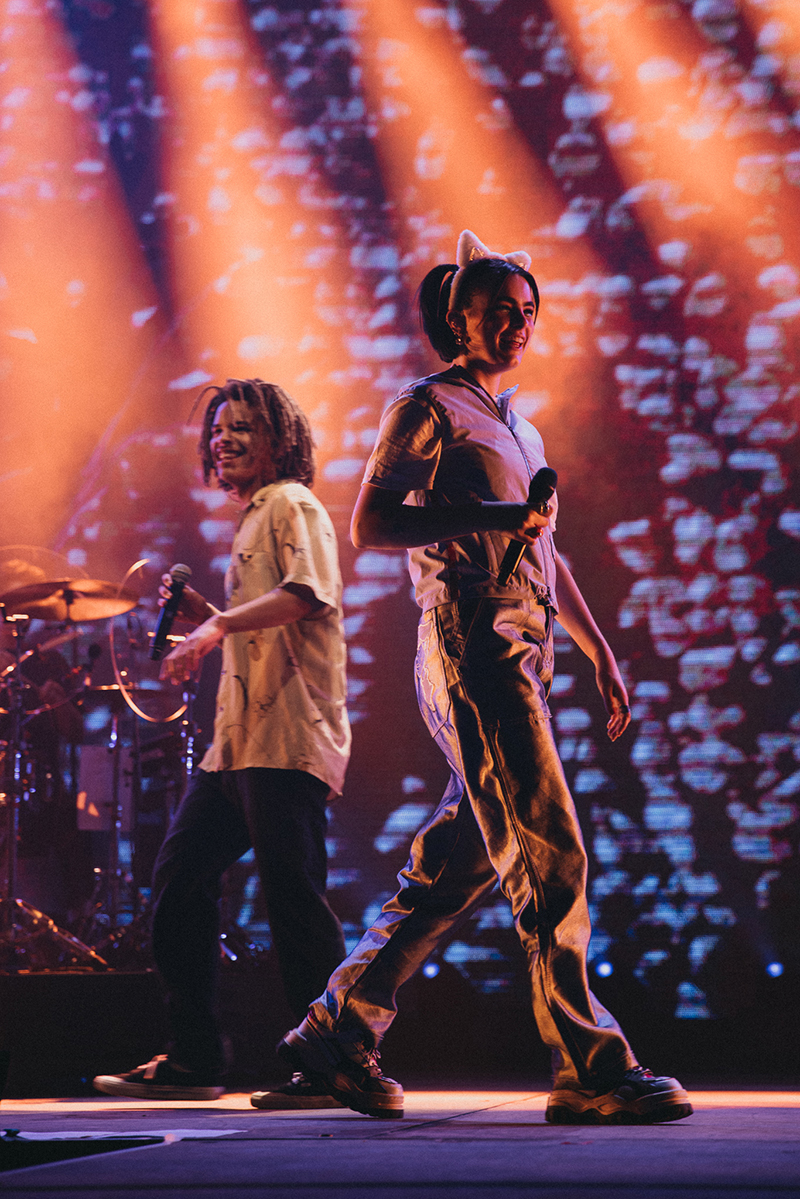
The Follow-Me system help solve another challenge for Dalgleish and the Human Person team. “A large part of the show featured Notch-affected I-Mag,” he says. “Previously on shows that I’ve done, especially Post Malone, having the remote-controlled and desk-operated followspots, has been the essential puzzle piece to making Notch work to its full potential. People may not realize that having perfect key lighting for Notch makes Notch work. To change the look of the Notch effect, I was adjusting the followspots.”
As previously mentioned, they spread the work out globally, employing a variety of people around the world to create and program for the tour, including out of Toronto programmer Nick van Nostrand. “Nick’s a great programmer who I’ve worked with on Janet Jackson and other shows,” comments Dalgleish. “For this one he did a lot of the initial programming, getting all the timecode in, building the file, and getting the initial building blocks done.
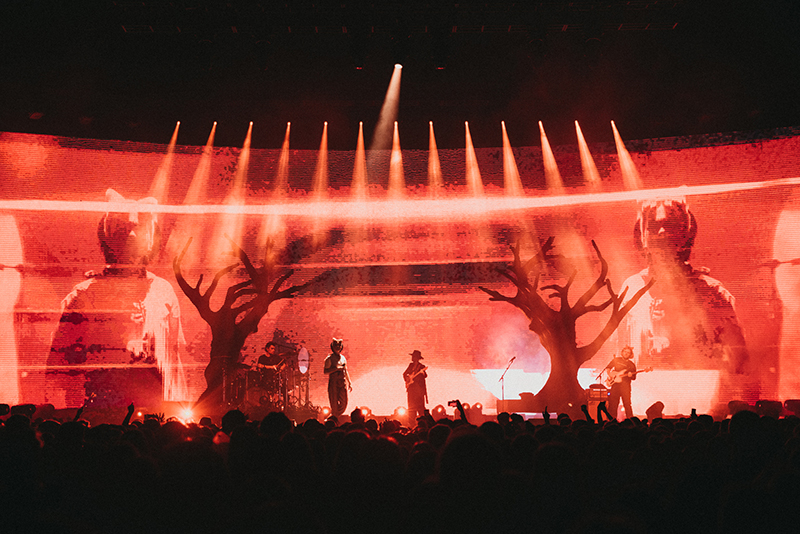
Building the Visuals
“We were really happy with how it all turned out on the video front,” Dalgleish adds. “The video was a team effort between Human Person as the show designers, and The Valdez, who are a husband and wife team out of New York, and an amazing company. They make all their content in really unique ways, including shooting on old ‘80s VHS cameras, Super 8 cameras, and other kind of almost forgotten techniques of making video content. The Benee shows in the past used almost like a moving background of video. There was no timecode; visuals weren’t assigned to any song; it was like a looping, hour-long piece of content.
“Human Person’s job was to direct where all the content was going to fit for every song and build it out to be a fully-fledged show plus incorporating Notch to each of the songs, which was a really great challenge for us,” Dalgleish continues. “We were able to take this amazing work that The Valdez created and place it where it needed to go. We mood boarded out the whole show in terms of color and progression throughout the video clips and how the lighting and other elements would be a part of that. Then, all the content was edited by Matthew Clode and Matthew Cummer in Auckland and Hamilton, Ontario, respectfully.”

For the media server, they selected a disguise GX 2 with Notch. “With the use of disguise and Notch, we worked with Ryan Sheppard of Dark Matter Technologies,” explains Dalgleish. “I have been working with Ryan on most of our projects, notably Travis Scott; he’s a great friend and an even better Notch designer. He was instrumental in making this project a success. For about 10 days, Ryan [based in Toronto] put himself on New Zealand time, going to sleep at 4 a.m. local time, if not later! We essentially designed the Notch portion of the show over Team Viewer, believe it or not. With zero ability to get anyone into New Zealand that isn’t a resident at the moment, we had to rely on technology in a way I never thought would be necessary in my lifetime. Every rehearsal, Ryan was watching, via FaceTime, through a camera feed we set up. He was making changes in real time and programming a completely world-class Notch show, remotely, at times dealing with a whopping five frames per second of connection.” Sheppard worked on a completely matched hardware setup in Toronto to the one in New Zealand. “Ryan relied heavily on previz,” Dalgleish continues. “He was able to build a file and make major changes on his set up with some test footage that we had and then pass it over to me in New Zealand and make changes as necessary.”
Almost every song in the show has real-time, generative effected content. Dalgleish estimates that there’s a 70/30 split between pre-recorded content and real-time. “As the set develops, we get into quite trippy and abstract Notch content,” he comments. “In fact, the final two songs only have Notch effects and no pre-recorded content at all, which I think was a showstopping moment. These camera effects really just highlight her personality and where she is going with these new songs.”
Human Person and Dalgleish worked closely with Benee on the aesthetic look and feel of the show. “She was amazing to work with,” says the designer. “She knows what she likes, which is the best thing in the world. She’s a collaborator. We had a lot of initial meetings, just to make sure we were all like 100 percent in agreement on the feel of the show. Once we got rolling, it was very much smooth sailing from there. We treated this as almost a showcase of what a great live show hopefully could be for emerging artists. We’re really proud of what we created.”
